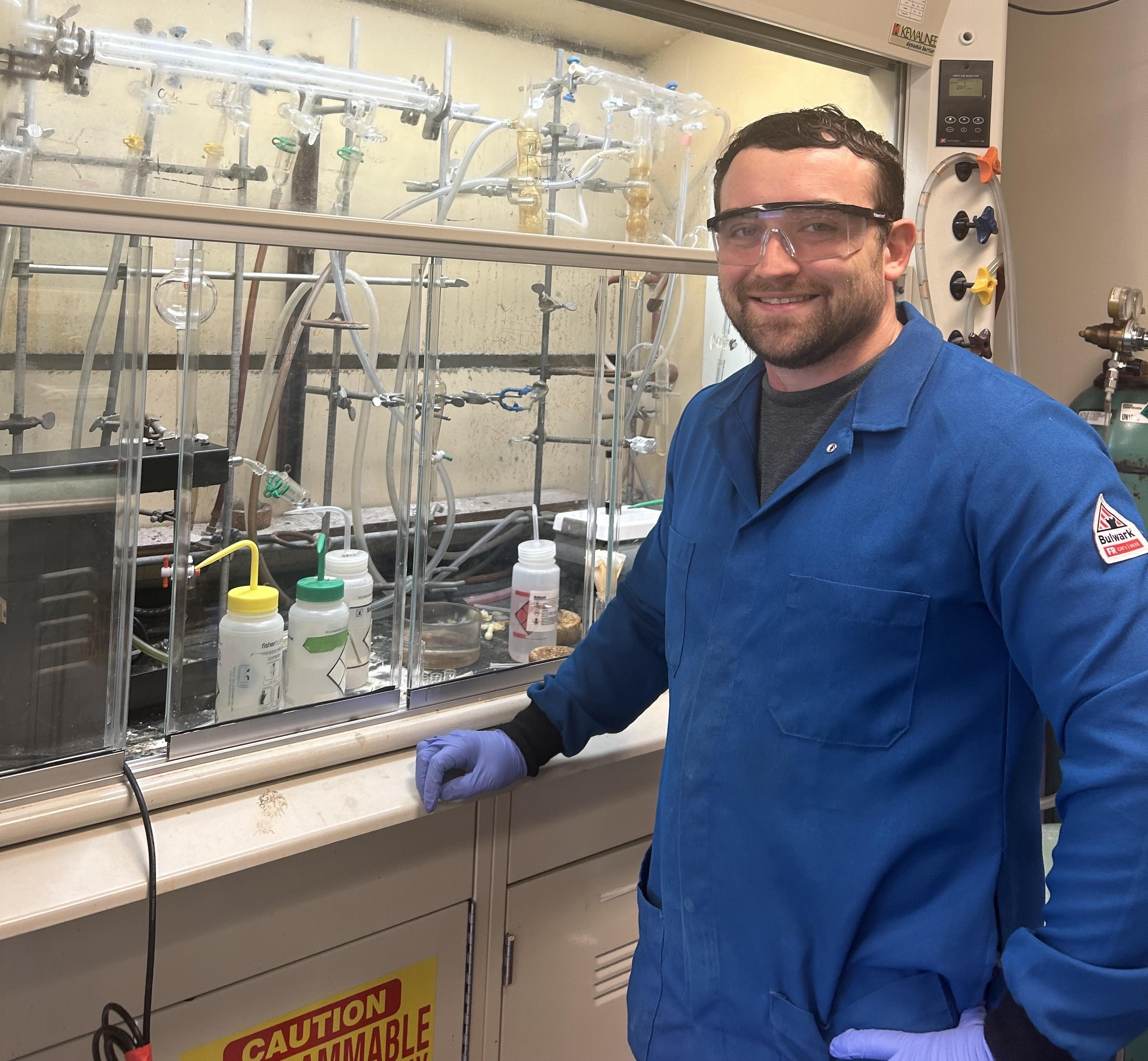Researchers Boost Flexible Organic Solar Panel Efficiency by Turning Down the Heat

A team of researchers led by Jordan Shanahan, a Ph.D. student in the Department of Chemistry, demonstrated a way to make an important step in organic solar cell manufacturing happen at a temperature of 80 degrees Celsius, or 176 degrees Fahrenheit, lower than normal.
August 15, 2025 | By Dave DeFusco
In solar technology, sometimes a small tweak can make a big difference. For a special type of solar panel made from thin, flexible, plastic-like materials, researchers at UNC-Chapel Hill have found that tweak: use less heat.
In a new study published in the Journal of the American Chemical Society, a team of researchers in the Carolina Department of Chemistry showed a way to make an important step in organic solar cell manufacturing happen at a temperature of 80 degrees Celsius, or 176 degrees Fahrenheit, lower than normal. That gentler approach not only prevents damage to the material but also makes the solar cells work better, achieving the best performance ever reported for this type of material.
“We figured out a way to lower the temperature where instead of the device performance decreasing, we get a performance boost,” said Jordan Shanahan, lead author of the study and a Ph.D. chemistry student at UNC.
These flexible solar panels, called organic photovoltaics (OPVs), are made from two main ingredients: a light-absorbing material—the donor polymer—a partner material, the acceptor, that helps carry away the electric charges created by sunlight.

To make the light-absorbing material stable, scientists often need to remove tiny chemical “side chains” from its structure. This makes the material pack more tightly and lets electricity move more easily. Traditionally, this removal process is done by heating the material to very high temperatures—around 220 degrees Celsius, or 428 degrees Fahrenheit. But there’s a catch: high heat-induced stress can ruin the fine, even blend needed for good performance.
Shanahan and co-authors, including Dr. Wei You, senior author of the paper and Cary C. Boshamer Distinguished Professor of Chemistry and Applied Physical Sciences, found a way to remove those side chains at just 140 degrees Celsius, or 284 degrees Fahrenheit, or even lower by adding a small amount of acid directly into the material before heating.
After testing different types and amounts of acid, they discovered that 5% diphenyl phosphate worked best. The acid speeds up the side chain removal without harming the rest of the solar cell. The researchers also found they could predict how fast the process would happen based on three simple factors: how strong the acid is, how much acid is added and the temperature used. This makes it easier for other scientists to fine-tune the process, almost like following a recipe.
“Lowering the temperature kept the two ingredients more ideally mixed, which led to better performance,” said Professor You. “With this new acid-assisted method, our solar cells reached about 4.5% efficiency—the highest ever reported for this type of material side chain free.”
In earlier work, the researchers had shown that removing side chains could make electricity move through the material two to five times faster. The new method keeps that benefit but avoids the damage caused by high heat. Importantly, the new low-heat process doesn’t make the solar cells less stable. Both the high-heat and low-heat methods produced materials that could handle higher temperatures over time. The difference is that the low-heat version started off working better.
The research team believes this mild approach could be used to improve many kinds of organic electronic devices.
“It’s a new tool that we hope others can utilize to achieve better performance and stability with these materials based devices.” said Professor You.

